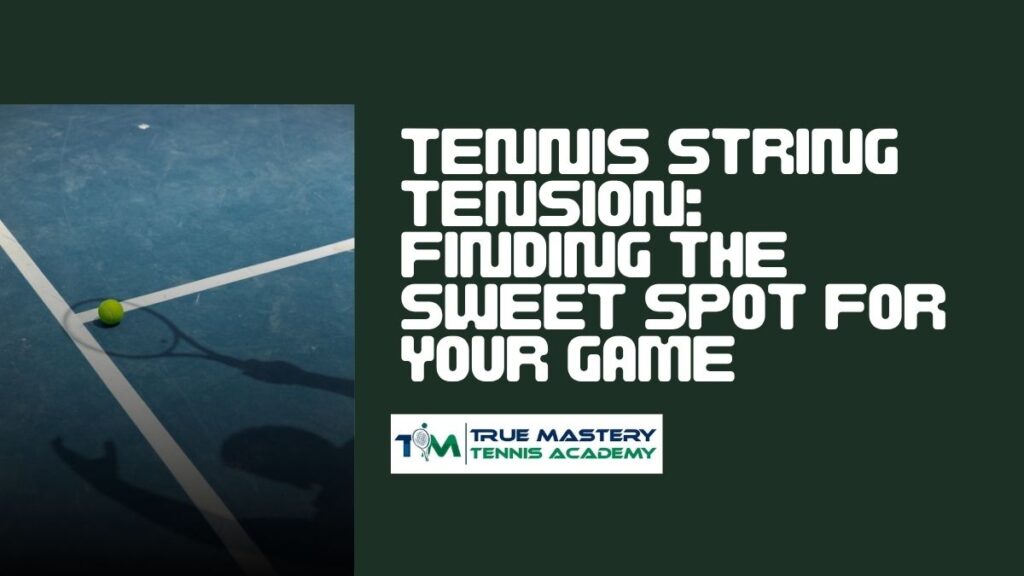Tennis String Tension: Finding the Sweet Spot for Your Game
If tennis strings are the engine of your racket, then string tension is the fine-tuning dial that decides how much horsepower you get. Players often underestimate how much tension influences their game, only to realize later that it’s the hidden variable behind control, comfort, and consistency. The question is not whether string tension matters, but rather, what tennis string tension should I use to bring out the best in my shots?
Why Tennis String Tension Matters
Tennis string tension directly determines how your racket responds when the ball makes contact. Think of it like the difference between bouncing on a firm trampoline versus a looser one. With higher tension, the strings provide a crisper, more controlled feel. With lower tension, the ball sinks deeper into the strings, creating a trampoline effect that delivers more power. Finding the right balance is like finding the sweet spot on a guitar—too tight or too loose, and the music just doesn’t sound right.
Tennis String Tension for Power
For players who want more power without needing to muscle every shot, lower tension is often the way to go. Looser strings allow the ball to spring off the racket, generating extra depth. This is particularly helpful for beginners or players who rely on comfort and easy playability. Multifilament strings at lower tensions amplify this effect, giving you effortless acceleration.

Tennis String Tension for Control
On the flip side, advanced players often crave control to place the ball with surgical precision. Higher tension strings provide a firmer response, letting you direct shots more accurately. This is particularly useful for those who play aggressively from the baseline and want confidence in aiming down the line or painting the corners without overhitting.
Tennis String Tension and Spin Potential
There’s an ongoing debate about whether lower or higher tension produces more spin. Lower tension allows more ball pocketing, which can create greater spin potential, especially when combined with polyester strings. Higher tension, meanwhile, can help advanced players generate consistent spin because of the predictable response. In practice, the best spin-friendly setups are often hybrids where tension and string type complement each other.
Comfort and Injury Prevention with Tennis String Tension
The tighter the strings, the harsher the impact on your arm. Players suffering from tennis elbow or shoulder discomfort often benefit from lowering their string tension or switching to softer strings like natural gut or multifilament. A 2024 physiotherapy study in Singapore found that players who reduced their string tension by just 3–4 pounds reported a 20% decrease in arm discomfort over six weeks of regular play (Nanyang Polytechnic).
How Tension Influences Durability
Durability isn’t just about the string material—it’s also about tension. Strings strung too tightly tend to snap faster because of the added stress. Conversely, lower tension can sometimes extend string life but may cause quicker fraying if you’re using softer materials. At True Master Tennis Academy, players are often guided toward optimal setups where tension complements their hitting style and reduces unnecessary restringing.
The Role of Player Style in Choosing Tennis String Tension
Your playing style dictates your ideal tension. If you’re a power player relying on spin-heavy forehands, a slightly lower tension helps generate pace and spin. If you’re more of a precision player who thrives on accuracy, higher tension ensures the ball doesn’t sail long. For all-round players, hybrid tensions can give the best of both worlds.
Real-World Insights on Tennis String Tension
A case study at Sport Singapore evaluated recreational and competitive players using different string tensions. The results showed that beginners who played with looser tensions hit more consistent shots, while advanced competitors preferred higher tensions for tactical precision (SportSG). This reinforces the idea that tennis string tension is not one-size-fits-all—it must evolve with your development and goals.
Practical Advice: Experimenting with Tennis String Tension
Even the best advice has to be tailored. Two players with identical rackets may swear by completely different string tensions. The golden rule is to experiment within a safe range—usually between 50–60 pounds—and notice how your control, power, and comfort change. At True Master Tennis Academy, coaches frequently advise making adjustments in small increments, around 2 pounds at a time, so players can feel subtle differences without losing their groove.
Why Expert Coaching Helps with Tennis String Tension
While it’s tempting to just copy what the pros use, the reality is your game is unique. Having expert coaching ensures you get a custom recommendation that suits your level and aspirations. At True Master Tennis Academy, tension selection isn’t just about today—it’s about helping players grow into their style, whether they’re learning consistency or preparing for competition.
Conclusion: Unlocking Your Best Game Through Tennis String Tension
So, what tennis string tension should you use? The answer depends on your goals—power, control, spin, comfort, or durability. Your string tension is the secret handshake between racket and ball, and getting it right can elevate your performance dramatically.
If you’re ready to master both your technique and your equipment choices, it’s time to train with professionals who guide you on every detail of the game. Learn more about tailored programs at True Master Tennis Academy and explore personalized tennis lessons that sharpen both your skills and your setup.
Click on the link to find out more about TM Tennis Academy’s lesson package. Chat with our head coach today!
About TM Tennis Academy
Private Tennis Lessons
Kids Tennis Lesson
Group Tennis Lessons
Whatsapp Us




